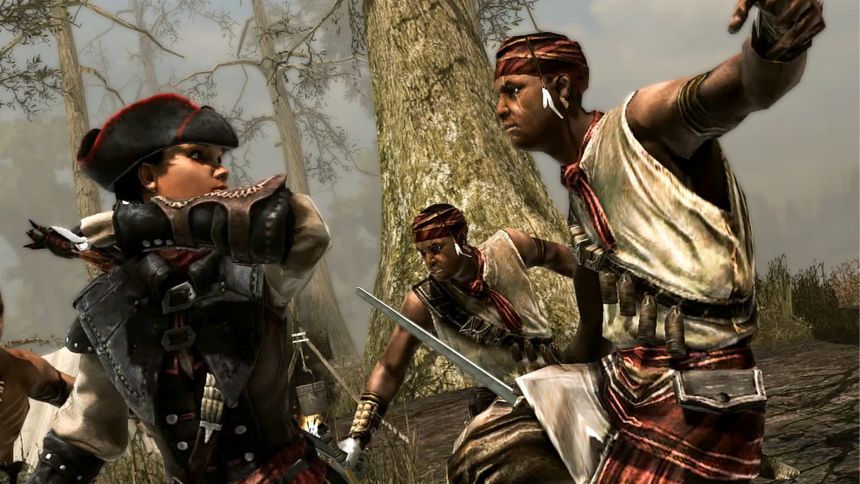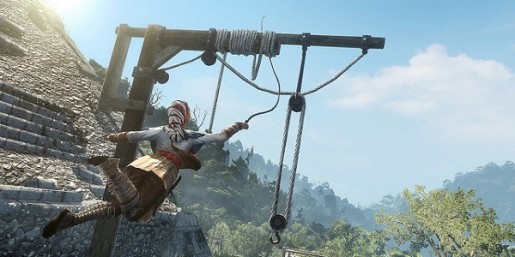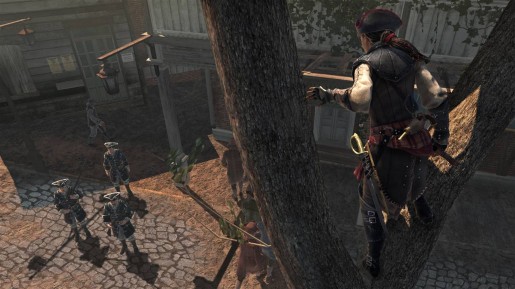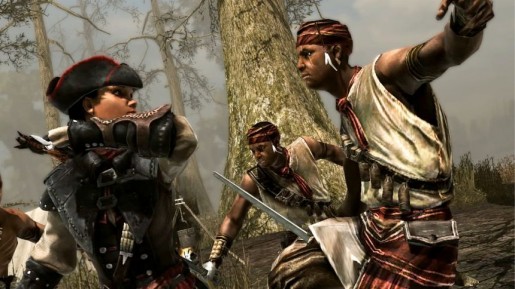The Lady persona is the exact opposite of the Assassin, which means you will be quite limited in your abilities. This led to it being my least favorite to use, but that isn’t to mean that it isn’t still fun. This persona disallows you from free running, a staple in the Assassin’s Creed series. In return, you have almost zero notoriety, so you are able to get up close and charm the guards for your personal needs. The Slave persona is the in-between form that retains the ability to free run from the Assassin form. It also starts with low notoriety, but will begin to grow the second you try to climb a building, so you will be hearing the notoriety noise quite often, when trying to cut corners quickly and accidentally running up a wall.
The stealthy sections are a little more prevalent in this game than the past, but luckily you have some pretty cool new weapons at your disposal. Early in the game, you will learn how to use the fast poison dart, which will quickly become your best friend in this game. It is a simple blow dart that you can use to silently take down enemies, rather in the middle of New Orleans or out on the bayou from up in a tree. This is the one part that is a lot of fun in the Lady persona, as you get to assassinate unsurprising victims by poison dart through the use of your parasol. You will gain other types of poison darts to mix things up later as well. Poison darts and similar weapons were available to you in other Assassin’s Creed games, but this is the first to really put them front and center. Beyond these, you have an assortment of weapons to choose from, as expected.
As we mentioned in our review of the initial handheld version, Assassin’s Creed III: Liberation was one of the best looking games on the PlayStation Vita at the time, and this definitely helps with the transition to the HD versions on consoles. The game itself may not look quite as good as the full console Assassin’s Creed releases, but it stands pretty well on its own. New Orleans seems more lively than its handheld counterpart, which is a big plus, as the original felt a little dead at times in comparison.
The original release for Vita featured multiple glitches, which is a little more understandable with a big game on a handheld, but it is a little more unforgivable here. While playing I came across a variety of glitches in my playthrough. This included multiple times where the person I was supposed to be following in a canoe got stuck along a wall, forcing a restart of the last checkpoint.
The camera was pretty competent most of the time, but it really struggled to play catch-up during combat, especially in the tougher battles. One instance of this is the battle with Baptiste. While trying to run around him to attack from behind, the camera would often fall behind and lose your perspective. Then upon actually getting a hit in on Baptiste, it had him taking damage with a few feet between my hatchet and his actual body. Glitches like this can really take you out of the experience when they become too prevalent, especially on a console.
Assassin’s Creed: Liberation HD is a solid port of the original game that released on PlayStation Vita. The graphics may not look quite up to the level of the mainline games, but they are overall quite good for a port of a handheld game. The story isn’t the best in the series and is hurt by its fragmented nature, but it is still worth seeing, with a likeable protagonist in Aveline. The three persona system is unique to this game and helps as a standout feature to set this one apart from the others. For gamers that may have missed out on the underrated Assassin’s Creed III: Liberation for PlayStation Vita, this is hard to pass on for only $19.99, or possibly even cheaper, with the $5 discount for those that purchased the Season Pass for Assassin’s Creed IV: Black Flag on PlayStation 3 or Xbox 360.
[Editor’s Note: Assassin’s Creed: Liberation HD was reviewed on the PlayStation 3 platform. The game was provided to us by the publisher for review purposes.]





